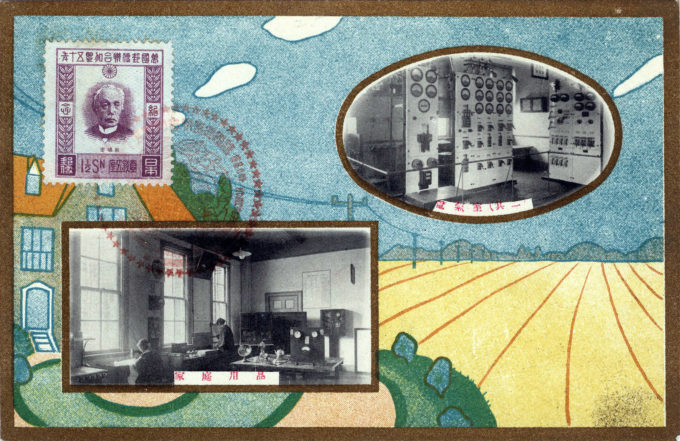“The introduction of the telephone to Japan [in 1893] created various anxieties and perplexities. The anecdotes regarding these early encounters suggest that the Japanese at first approached the machine almost as if it were an organic entity.
“Kaneko Kentaro’s surprise at the fact that ‘it works in Japanese too’ makes the telephone out to be some kind of monolingual ‘language relay’ that hears the message and then repeats it to the person on the other end, instead of a neutral device that simply transforms sound waves into electrical signals abstracted from any possible semantic or semiotic content.
“… Telephones first began to appear in [Japanese] literary works around the turn of the century. One of the earliest documented appearances of a telephone in a literary work is found in Saito Ryokuu’s (1868-1904) Araezake (1898). At the time there were still only around 3,370 subscribers to Tokyo’s phone service.
“The first writer to own a telephone was probably Kunikida Doppo (1871-1908), who had a phone installed in his home in 1904. But the first writer to make extensive use of the telephone and write about it was, in all likelihood, Natsume Soseki. As an employee of the Asahi shimbun, Soseki had the use of a phone in his company lodgings and his diaries are filled records of phone calls made and received.
“… Public phones began appearing in telegraph offices as soon as the line between Tokyo and Yokohama was completed in 1890, and public telephone kiosks began appearing on street corners in the autumn of 1900.”
– Electrified Voices: How the Telephone, Phonograph, and Radio Shaped Modern Japan, 1868-1945, Kerim Yasar, 2018

50th Anniversary of the Telephone commemorative postcard, 1926, with a postage stamp honoring Baron Maejima Hisoka. One year after its invention in 1877 by Alexander Graham Bell, the telephone became available in Japan. At first its use was reserved for the government, public affairs organizations such as the police, and a few businesses. Appointed to the Ministry for Popular Affairs in 1870 Baron Maejima would later establish Japan’s postal system in 1877. Later, as Vice-Minister of Communications, the baron also established Japan’s state-owned telephone service in 1890, making the telephone available to businesses and the general public. The first lines were laid between Tokyo and Yokohama, connecting 155 Tokyo subscribers to 42 in Yokohama.
See also:
60th Anniversary of the Telephone commemoratives, 1936.
“Away from the commercial centers of Tokyo and Osaka, telephone transactions were susceptible to all kinds of playful mischief. One particularly amusing example comes from Yamagata City, where telephone service was instituted in 1907.
“The telephone operators were taught to answer with the by-now standard opening of ‘Moshi moshi‘ [hello, hello], to which the caller would often respond, ‘Kame yo, kame yo.’ The operator would repeat, ‘Moshi moshi,’ to which the caller would again repeat, ‘Kame yo, kame yo.’ Then both operator and caller would sing together, ‘Moshi moshi kame yo,’ the opening lyrics of the popular children’s song ‘Usagi to kame’ (Rabbit and Turtle).
– Electrified Voices: How the Telephone, Phonograph, and Radio Shaped Modern Japan, 1868-1945, by Kerim Yasar, 2018

